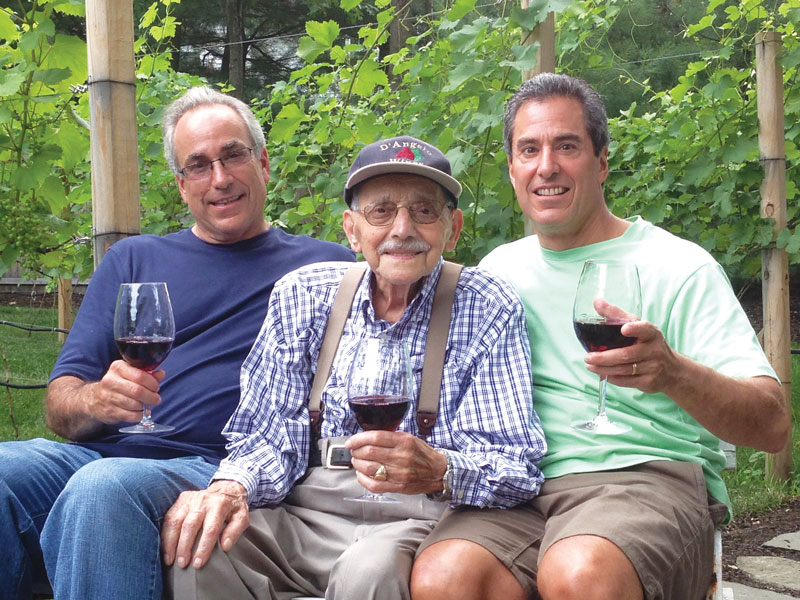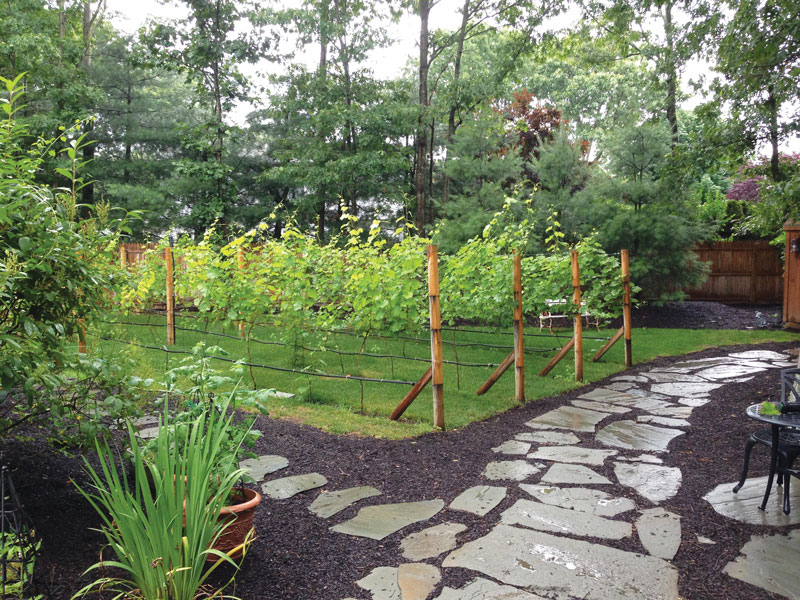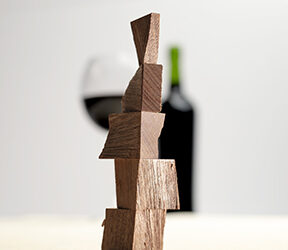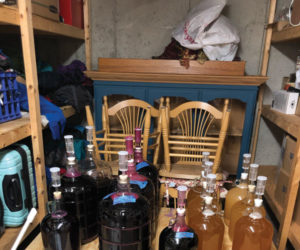The In Laws
I first learned to make wine from my Sicilian father-in-law. In 1982 my wife and I married and after looking at the costly rents of over $350 a month, we reluctantly moved into my in-laws’ Long Island, New York, basement apartment. I quickly learned that my mother-in-law loved to feed me, and I loved to eat. It wasn’t long before I loved living there. Also, my father-in-law who had just recently retired, spent his time tending to his vegetable garden and making beer and wine. Turns out he had been making wine with his father and uncle since he was a boy. Years later, long after we had moved into a house of our own, I asked him why he recently stopped making the wine. Then in his eighties, he said he was too old to be doing all that work. I told him that if he still wanted to make wine I could help and he could just tell me what to do. His eyes lit up with excitement.
That following weekend we went to the local wine grape supplier and bought two cases of Merlot grapes. We also bought whatever miscellaneous supplies we needed like Campden tablets, yeast, yeast nutrients, and corks. We set up a 6-foot plastic folding table in his garage. My job was to pick the grapes off the stems by hand. As I filled each bowl with picked grapes, he would dump them into a small stainless steel crusher that was straddled over the large pail, do a few cranks, and wait for me. The crushing was quick, but the destemming took quite some time . . . I felt there must be a better way.

The following weekend I returned for the press. He showed me how the grape skins rise out of the juice from the CO2 produced by the fermentation and how he had to punch it down twice a day. His method was to wash his hands and arms up to the elbows and just press it all the way back down into the juice with his hands. He had a very small basket press that looked homemade. We cleaned all the carboys and the press with a sanitizer solution of potassium metabisulfite. This time we were done by noon and filled up a 6-gallon (23-L) carboy with the partly fermented wine. He checked his hydrometer and it was more than halfway fermented. The following year we bottled the wine using old wine bottles we had saved over the course of the year. He had a small handheld corker that looked a lot like the two-levered corkscrews.
After a couple of years of following his winemaking methods, I started asking other winemakers how they made their wine. I could tell my father-in-law, Tony, was offended when he asked me accusingly, “What, are you trying to make it better?” “Exactly,” I responded. I invested in a destemmer/crusher, a good basket press that was larger and much easier to clean, and a floor-stand corker. The wine was getting better, and he liked it, but we still did all our testing by taste. Leaving less to chance I started testing for SO2, pH, and acidity with the Vinmetrica testing kits and making the desired adjustments.
His method was to wash his hands and arms up to the elbows and just press it all the way back down into the juice with his hands.
Years later I got the idea of clearing the oak trees in the back section of my yard and planting a small vineyard. We planted Malbec, Merlot, and Marquette. Tony was there throughout the entire planting process telling me all the while they’re “Too deep!” “Too close!” “Not deep enough!” At 92 years old, I was not going to argue with him, so I just rolled with it. It’s been 10 years since the planting and the vines have grown in nicely.
Tony enjoyed walking through and inspecting the vines for several years before he passed away at the age of 95. Although he is sorely missed, Tony D’Angelo’s memory and his Sicilian winemaking tradition lives on with my brother and cousins who have now joined me in this family tradition.
A Glass of Wine
by Tom Papa

A thought once popped into my head.
“This looks like good terrain” I said
The rows should be from north to south
to let the sun in and the shadows out.
Lots of sun, some scattered trees
should dry any mold with the blowing breeze.
With rows and rows of rolling green
and short wild grasses in between.
What starts out as a simple vine,
soon becomes a grape growers shrine.
Nice long shoots with leaves so big.
Then tiny grapes sprout from the twigs
and this is when the trouble begins.
Like paying the price for all your sins.
The bugs, like plagues, the mildew spreads.
“There’s a fungus amongus!” “Now weeds in the beds!”
The vines will struggle from floods to droughts.
“Too hot! Too cold!” I now have my doubts.
And just when they start to get through it all,
the grapes are ripe, the vines standing tall.
The birds, flocks of birds gather to meet
within the vines for a sweet snack to eat.
If we let them, they’ll eat them all.
None of the grapes will be left for fall.
I run and chase and scream and shout.
Each fly away with a grape in its mouth.
The grapes will be picked, once nice and sweet.
Then they get crushed, while a few we will eat.
They ferment on the skins in a mush like a stew.
Next week to the press so much still to do.
From the press, to the tank, then the barrel of oak.
All year in the cask for its annual soak.
Then into the bottle but it’s still not yet done.
It needs time in the bottle to age, it’s too young.
It’s such a long process from bud break to glass.
Good wine can’t be made without busting your ass.







